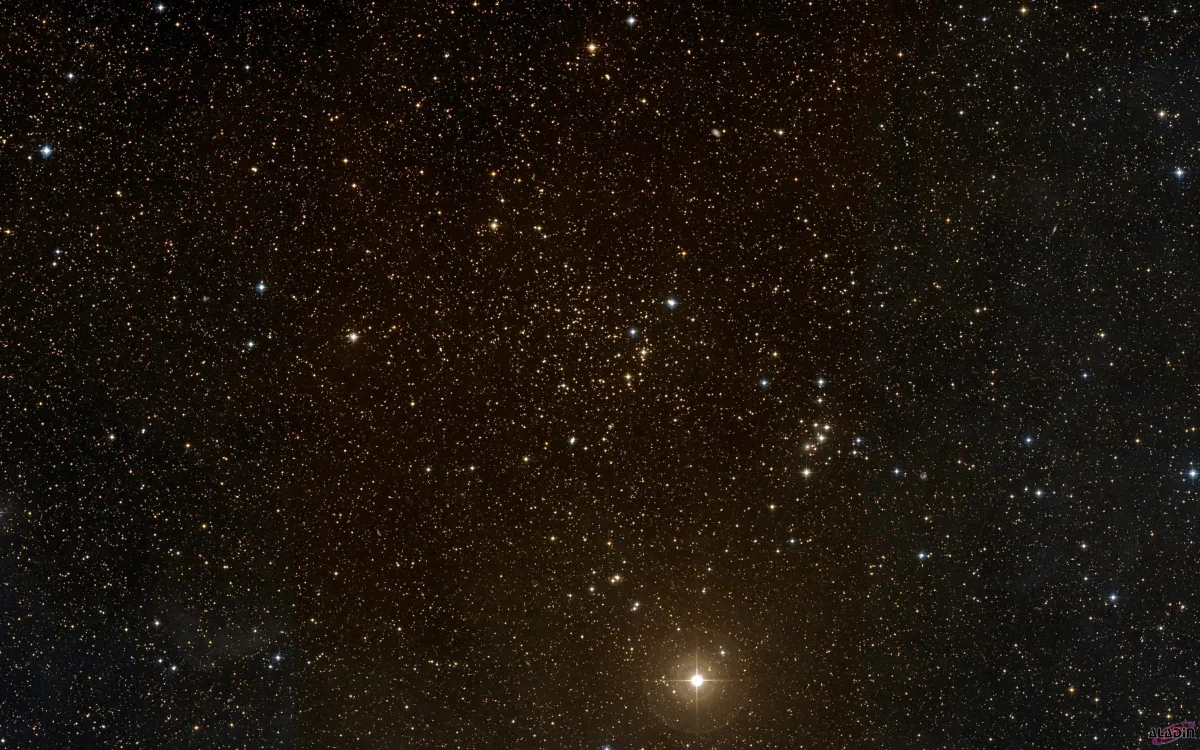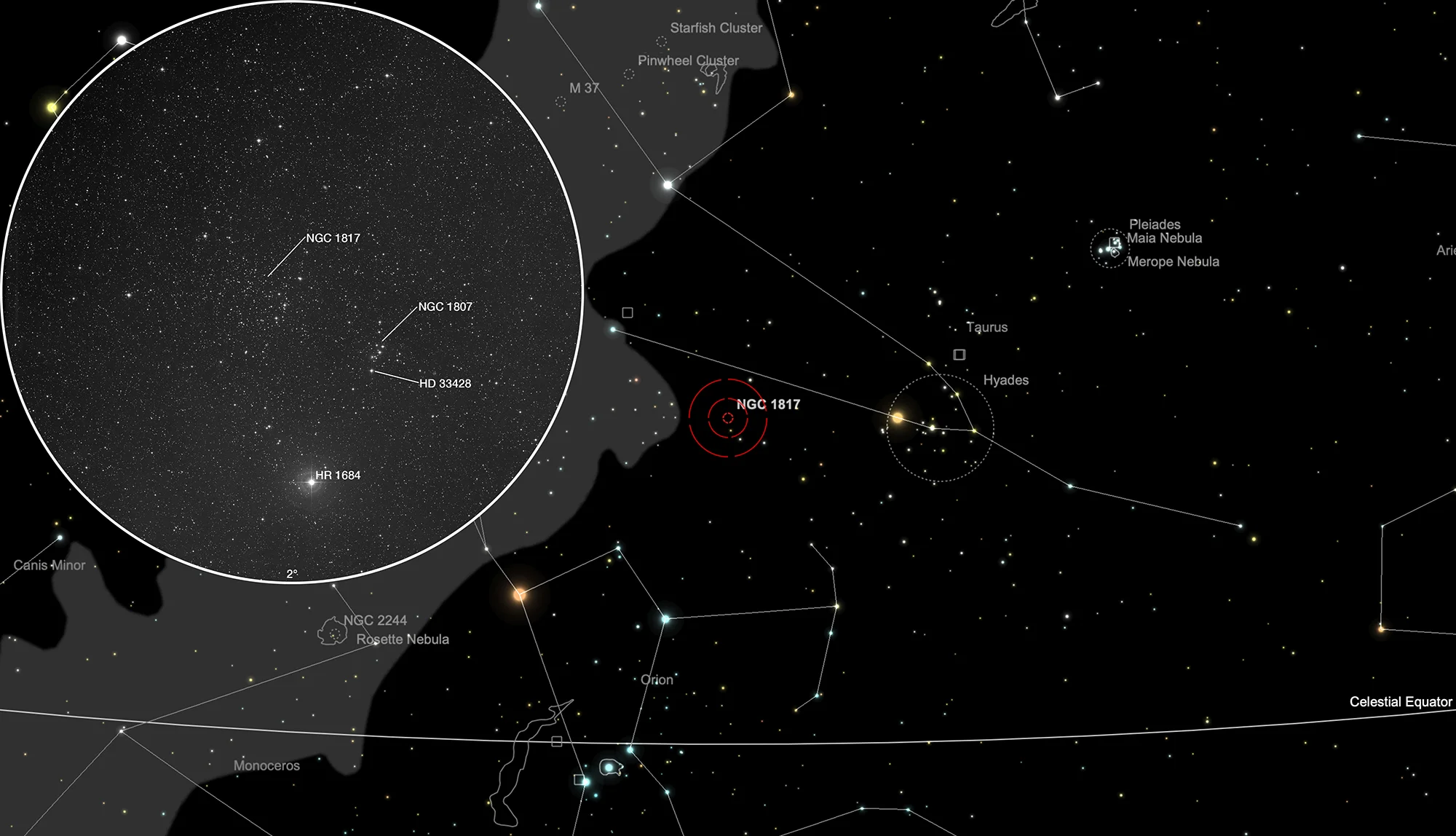Open Cluster NGC 1817

History
The open cluster NGC 1817 was discovered on 19 February 1784 by German-British astronomer William Herschel. He was sweeping the sky with his 18.7-inch speculum reflector of 20 feet focal length in Datchet, near to Windsor Castle. He listed the cluster as VII 4 and noted: «A cluster of pretty large and pretty compressed stars, considerably rich. 20 or 25' diameter, irregularly round.» [463]
John Herschel observed the cluster on 25 January 1832 (sweep 395) and listed it as h 349 with the notes: «Large, rich cluster; stars 12...15 magnitude; fills field. Place that of a double star. The most compressed part is 42.5s following the couble star and 3' south of it.» As he was observing he noticed also another cluster of stars nearby, which he listed as h 348 (NGC 1807) and noted: «A cluster of 10 or 12 large and a good many small stars. The place that of a double star. It is perhaps an outlier of VII 4.» [466]
Physical Properties
NGC 1817 is an open cluster that appears to be similar in age to the Hyades. However, a comparison of its red giant clump with those of the Hyades and Praesepe suggests that NGC 1817 has a lower heavy-element (metal) abundance. Located approximately 1800 parsecs from the Sun, almost directly in the direction of the Galactic anti-centre and about 400 parsecs below the Galactic plane, it exhibits a metallicity less than that of our Sun.
NGC 1807 appears as a grouping of bright stars set against a moderately populated stellar background, situated near NGC 1817. Photometric measurements of NGC 1807 confirmed that it is not a real physical cluster. For instance the star HD 33428 is a high proper motion star at a distance of 331 parsec and does not belong to the cluster. [732]
| Name | RA | Dec | Type | vMag | Dim | MD | Dreyer Description | Identification, Remarks |
|---|---|---|---|---|---|---|---|---|
| NGC 1807 | 05 10 46.0 | +16 30 48 | OCL (II2p) | 7.0 | 12 | Cl, pRi, st L & S | h 348; GC 1020; OCL 462; * group? | |
| NGC 1817 | 05 12 27.0 | +16 41 00 | OCL (III1m) | 7.7 | 20 | 1.972 | Cl, L, Ri, lC, st 11…14 | WH VII 4; h 349; GC 1030; OCL 463 |
Finder Chart
The open cluster clusters NGC 1807 and NGC 1817 can be found in the constellation Taurus. On 12 December it in opposition with the Sun and is therefore highest in the sky at local midnight.
